Negligence in slip and fall lawsuits occurs when property owners fail to maintain a safe environment. They must regularly inspect and fix issues like spills or uneven surfaces. Ignoring known hazards or not using warning signs also shows negligence. Each state has different standards, affecting how these claims progress. Understanding these laws helps in identifying negligence. More insights can provide a deeper grasp of how these elements play into legal outcomes.
Key Takeaways
- Negligence occurs when property owners fail to maintain safe conditions, such as ignoring spills or damaged areas.
- Routine inspections and repairs are essential; neglecting them can constitute a breach of duty.
- The hazardous condition must be present and linked to the injury for negligence to apply.
- Documentation like photos, videos, and witness statements is crucial in proving negligence.
- Comparative negligence laws affect compensation, reducing it based on the victim's share of fault.
Understanding Duty of Care in Slip and Fall Cases
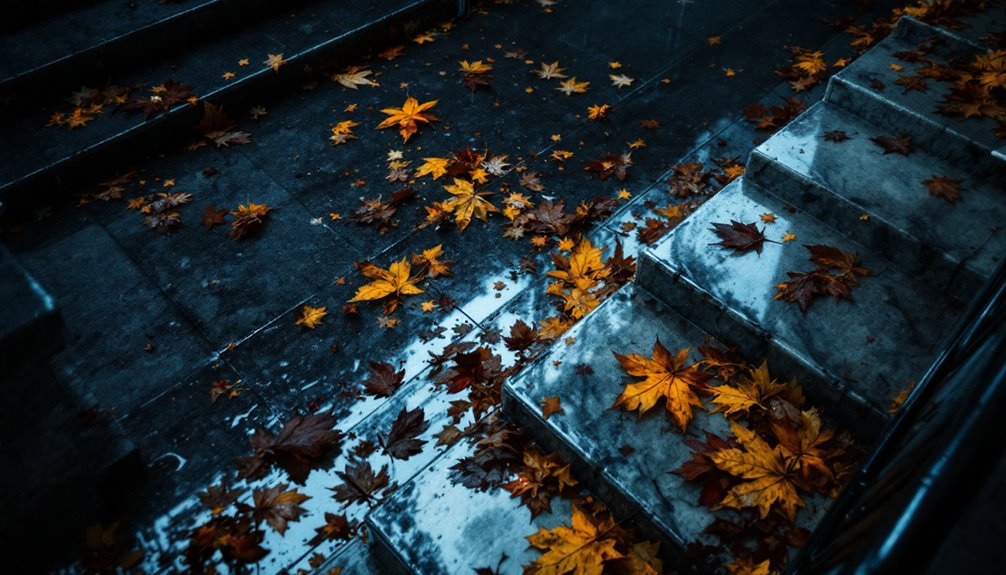
In slip and fall cases, understanding the duty of care is essential. Property owners must keep their property safe and free from hazards. This responsibility is defined by negligence law and varies by state. The duty of care requires property owners to maintain a reasonably safe environment for visitors. Liability in slip and fall cases often hinges on whether this duty was fulfilled. The duty applies to owners, occupiers, and controllers of property. A property owner's regular maintenance and awareness of potential dangers are critical. The visitor's status, such as invitee or trespasser, affects the duty owed. Evidence like maintenance records can support claims. Understanding these factors helps determine liability in slip and fall cases. Proper legal guidance is advised.
Identifying Breach of Duty by Property Owners
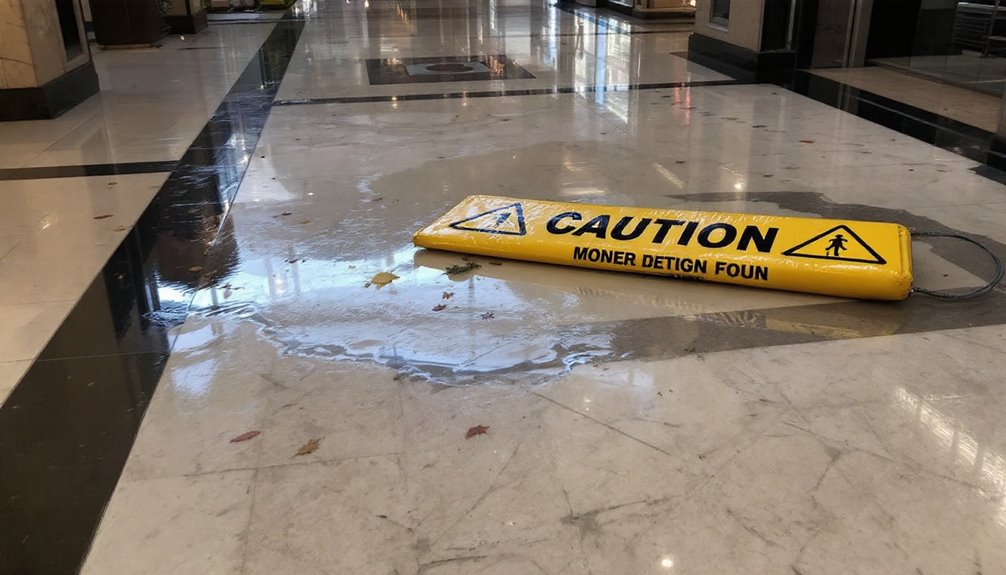
Property owners often face legal scrutiny when accidents occur on their premises. A breach of duty can result from negligence in maintaining safe environments. This includes failing to conduct routine inspections or neglecting repairs of damaged areas. Ignoring known hazards, such as spills or uneven surfaces, can lead to liability issues. Lack of proper cleaning and maintenance protocols also signifies negligence. Inadequate lighting may contribute to dangerous conditions, increasing the risk of accidents. Moreover, property owners must be aware of the top legal mistakes for small businesses that can exacerbate these situations. Failing to document maintenance activities or incidents can weaken a property’s defense in case of a lawsuit. Additionally, not having sufficient liability insurance can leave owners vulnerable to significant financial repercussions in the event of a claim. Ensuring compliance with safety regulations and implementing thorough risk assessments are crucial steps in reducing legal exposure.
Furthermore, inadequate warning signs about hazards can indicate a breach of duty. Warning signs must be visible and clearly mark risky areas. Reasonable actions should be taken to address known risks, following industry standards. Evidence of previous incidents without corrective measures suggests a pattern of negligence.
Establishing Causation in Slip and Fall Accidents
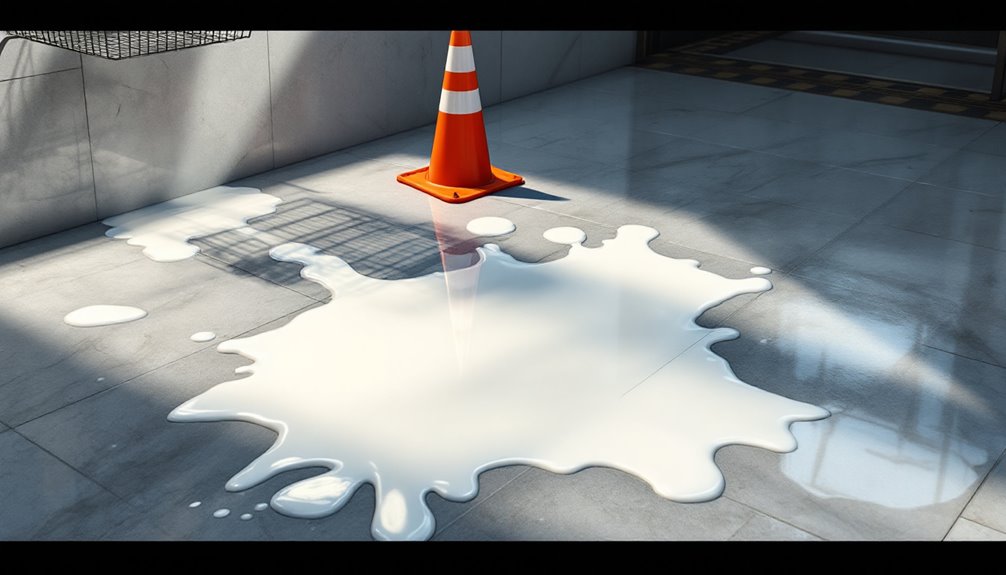
Having identified the breach of duty by property owners, the next step is to establish causation in slip and fall accidents. Proving causation involves showing that the hazardous condition directly led to the injury. The hazardous condition must be clear and present at the time of the accident. Evidence like photographs or videos can demonstrate this negligence. Witness statements are useful in proving the condition's presence. Linking the condition to the injury is essential. Medical records and expert testimony help establish this link. Eyewitness accounts and video footage can reconstruct the accident, showing causation. Physical evidence from the scene supports the connection. Documentation, such as measurements and descriptions, is important in demonstrating how the hazard caused the fall.
Assessing Harm and Damages From Slip and Fall Injuries
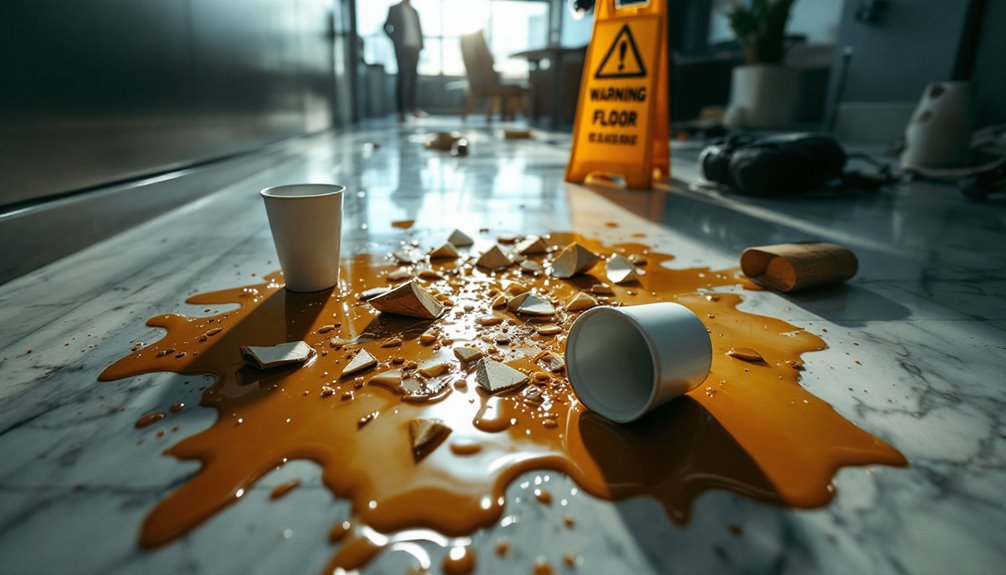
Evaluating harm and damages in slip and fall injuries is essential for determining compensation. Injuries can be severe, including fractures, head trauma, or spinal cord damage. These injuries lead to costly medical bills and lost income. The financial burden can extend to family members. Liability insurance often plays a role in covering these expenses. Personal injury settlements aim to address these costs and the pain and suffering experienced. Legal professionals who handle a car accident or a slip and fall case assess evidence to establish fault and negotiate fair settlements. Victims may also seek compensation for emotional distress and long-term rehabilitation needs. Understanding the legal process ensures injured individuals receive the support they deserve. Additionally, various factors influence what determines injury claim payouts, including the severity of the injuries, the impact on the victim’s daily life, and the clarity of liability. Documentation such as medical records, witness statements, and expert testimonies will also contribute to building a strong case. Therefore, it is crucial for victims to work closely with legal experts who can navigate these complexities and advocate for their rights during the claims process.
Compensable damages include medical costs, lost wages, and emotional distress. If negligence is proven, the injured party may receive compensation. Personal injury settlements can also account for long-term effects on quality of life. Evaluating these damages is vital in ensuring fair settlements and understanding the true impact of the injury.
The Importance of Gathering Evidence
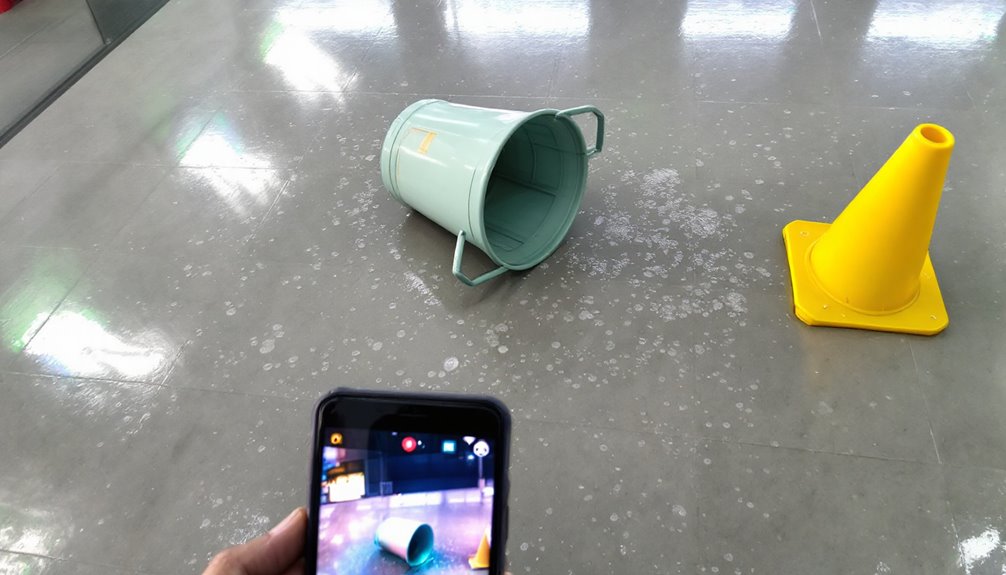
In slip and fall lawsuits, collecting strong evidence is critical. Visual documentation, like photos and videos, captures the scene and hazards involved. Witness statements and maintenance records provide additional support by showing the property owner's awareness and actions.
Visual Documentation Value
Gathering visual documentation is essential in slip and fall lawsuits. It plays a critical role in proving negligence and resolving legal disputes. Photographs and videos capture the accident scene, showing hazards like wet floors or uneven surfaces. These images highlight conditions that may change quickly, emphasizing the need for immediate documentation. Time-stamped evidence can establish the sequence of events. Clear and high-quality visuals from multiple angles provide an objective perspective, detailing factors like lighting and floor texture. Such evidence helps establish liability by vividly showing the accident's context. Organizing and preserving this evidence is essential. Copies and backups guarantee no loss of information. Professional assistance can aid in the proper collection and analysis of all visual evidence.
Witness Statements Impact
Although often overlooked, witness statements play a significant role in slip and fall lawsuits. They help establish liability by describing the incident and confirming the presence of hazards. Witnesses provide details about the sequence of events, potentially refuting any claims of negligence on the victim's part. Their accounts can align with the injured party's narrative, strengthening the case against the property owner.
Witness statements offer an unbiased perspective, identifying environmental factors that contributed to the fall. They verify timelines and may reveal previous complaints, highlighting the property owner's awareness of dangers. By securing witness contact information, future testimony is guaranteed. Multiple witness accounts enhance credibility and support settlement negotiations. Overall, witness statements are essential in building a strong legal case.
Maintenance Records Significance
Analyzing maintenance records is crucial in slip and fall lawsuits. These records serve as property upkeep documentation, revealing the frequency of inspections and repairs. They can show negligence if inspections were infrequent or absent. Maintenance records detail cleaning schedules and reported issues. They provide evidence of regular or irregular property maintenance. If hazards were reported and ignored, negligence becomes apparent.
Maintenance logs document inspection and repair history. They show the last time an area was checked or fixed. Inadequate lighting or other hazards can be traced through these logs. They indicate if employees or managers knew about hazards but did not act. This documentation helps establish fault in slip and fall cases, strengthening claims against property owners.
Role of Incident Reports and Witness Statements
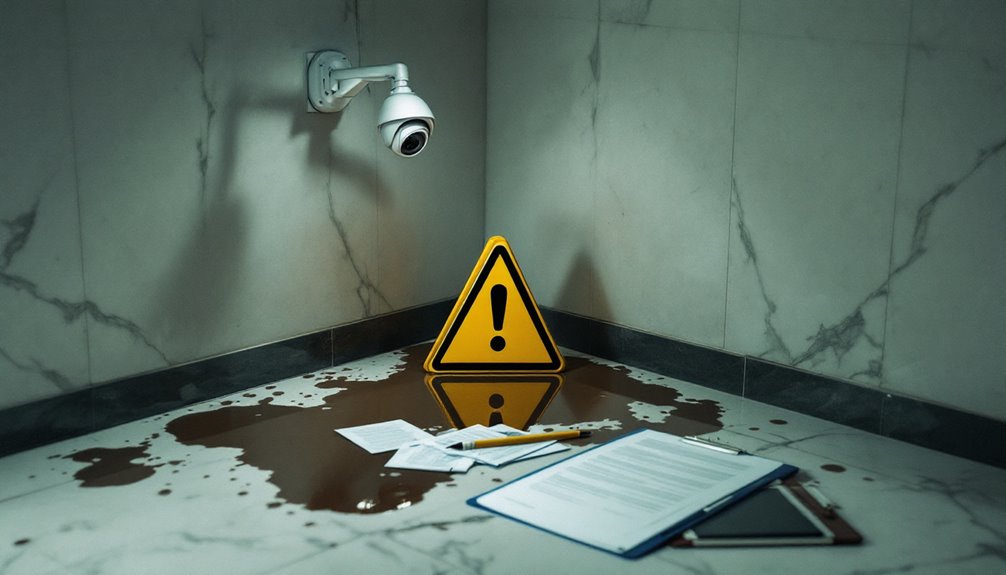
Incident reports and witness statements play a pivotal role in slip and fall lawsuits. They provide detailed accounts of the incident and help establish the property owner's liability. Accurate documentation and reliable testimonies can profoundly impact the outcome of a case by supporting claims of negligence.
Importance of Incident Reports
An incident report is an essential tool in slip and fall lawsuits. It provides an official record of events, which is critical for determining negligence and liability. Such reports make certain the details of what happened are documented accurately, helping to preserve evidence when memories are fresh. This makes it difficult for the defense to dispute the incident or conditions. Incident reports also streamline insurance claims. They offer a clear account that assists insurers in evaluating and processing claims more efficiently. Additionally, the report notifies property owners, shifting responsibility to them to address hazards. By formalizing the incident, these reports play a pivotal role in protecting the injured party's rights and aiding in the pursuit of fair compensation.
Value of Witness Testimonies
Beyond the formal documentation of incident reports, witness testimonies play a significant role in slip and fall lawsuits. Witness testimony helps establish negligence and liability. Consistency with facts and other evidence is key for credibility. Witnesses provide relevant information about the incident. They can describe hazardous conditions that contributed to the accident. This information is essential for proving the property owner's negligence.
Witness testimonies can impact the outcome of a case:
- Reconstructing the Scene: Descriptions help in understanding how the accident happened.
- Establishing Negligence: Testimonies support claims of negligence against the property owner.
- Challenging or Supporting Claims: Witness statements can either strengthen or weaken the case.
Witness testimonies are valuable tools in determining liability in slip and fall cases.
Utilizing Photographic and Video Evidence
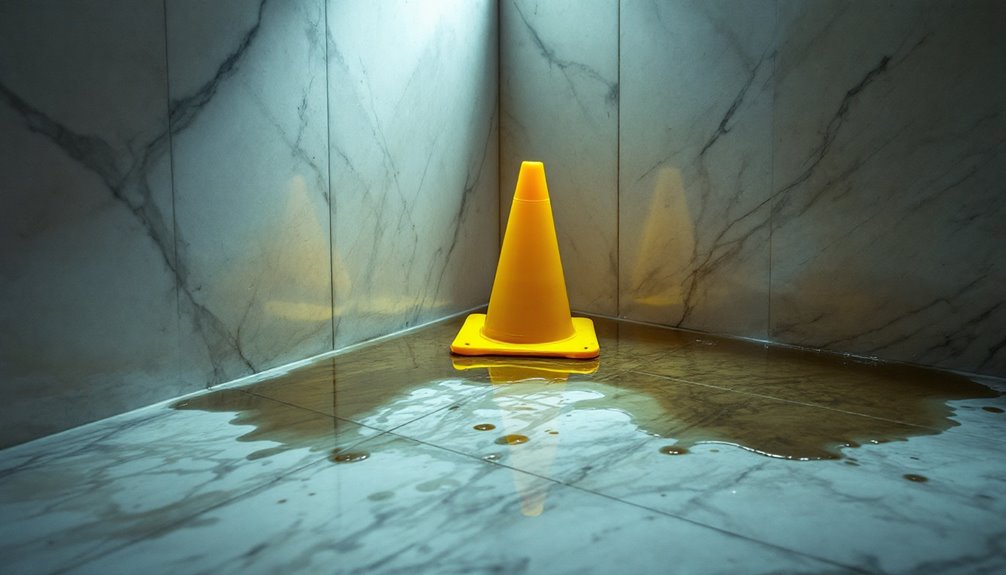
Capturing photographic and video evidence plays a significant role in slip and fall lawsuits. Such evidence is essential to prove negligence. Photographic evidence helps preserve the scene. Photos capture conditions like wet floors and uneven surfaces. They show if warning signs were present. Different angles and wide shots provide context. Photos also document injuries and their progression. Video evidence offers an objective account. Surveillance footage shows the incident without bias. It corroborates witness testimony and reveals conditions before the accident. Video can indicate if hazards were ignored and how the situation was handled. Both types of evidence are essential. They strengthen claims and can impact settlement negotiations importantly, ensuring fair compensation for the victim.
Maintenance Records and Their Impact on Cases
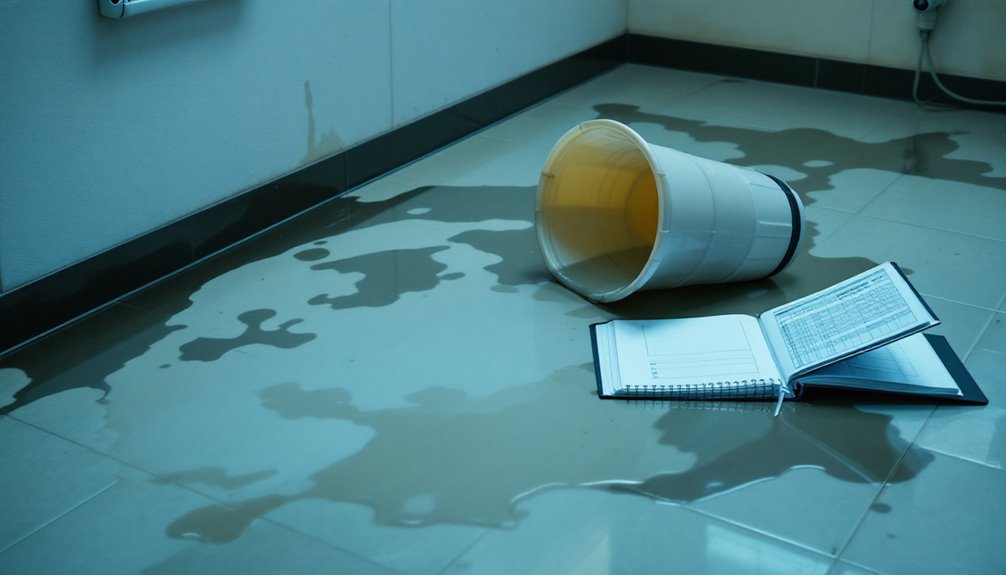
Maintenance records play a vital role in slip and fall cases by serving as key documentation. They provide evidence of whether the property owner maintained a safe environment or neglected necessary repairs. Such records can help prove negligence, showing if hazards were ignored or left unaddressed.
Importance of Documentation
Documentation plays a critical role in slip and fall lawsuits, especially maintenance records. These records provide insight into the property's upkeep. They show when inspections or repairs occurred. They help establish if negligence is present. Maintenance records can indicate awareness of hazards. They demonstrate whether owners took steps to address issues. Lack of proper documentation might suggest negligence. Regularly updated records are essential. They help track cleaning schedules and repairs. This can support a slip and fall claim.
- Maintenance records establish a timeline of inspections and repairs.
- They reveal if the property owner knew about hazards.
- Proper documentation can be critical in proving negligence.
Accurate maintenance records are essential. They substantially impact the outcome of slip and fall cases.
Evidence of Negligence
Understanding the role of maintenance records is key to proving negligence in slip and fall lawsuits. Maintenance records can reveal if a property owner knew about a hazard. They can show history or lack of maintenance activities. These records might contain past complaints about the area. They help determine if the property owner breached their duty of care. If maintenance was neglected, it suggests negligence. Records can indicate if inspection policies were followed. They highlight long-standing hazards. Incident reports and logs provide context. They show previous incidents or repairs. In court, these records link hazards to the owner's actions. They form a strong case by demonstrating a pattern of negligence. Proper collection of these records is essential.
Timing of Hazardous Conditions and Liability
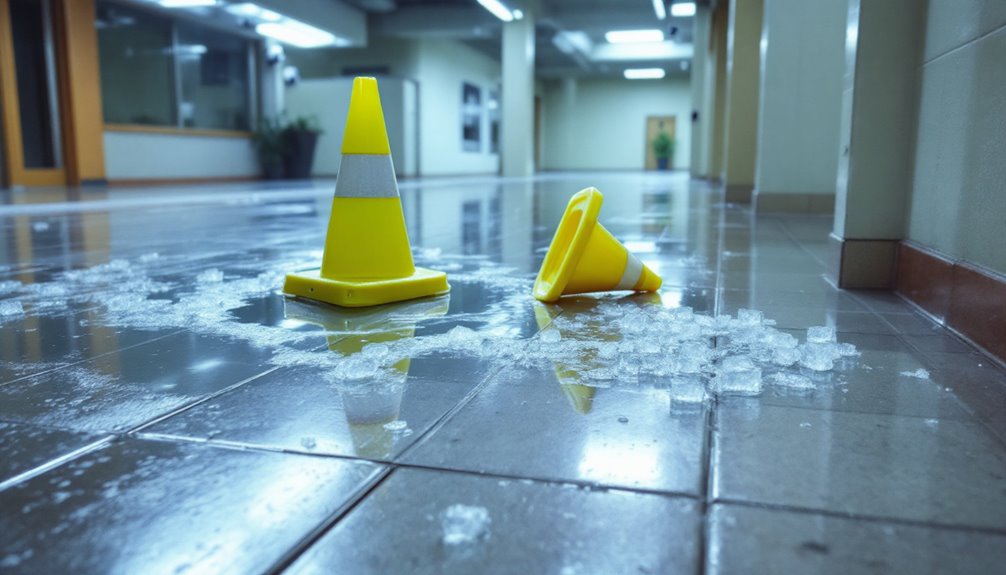
In slip and fall lawsuits, the timing of hazardous conditions plays a significant role in determining liability. For liability to be established, the property owner must have had knowledge of the hazard. They are expected to address it within a reasonable time. Evidence showing how long the condition existed is key. If the hazard was present long enough, it might indicate negligence.
- Knowledge of the hazard: Owners should know about the risk through regular checks or reports.
- Reasonable time to address: Owners must act promptly to fix or warn about hazards.
- Evidence of duration: Witnesses and surveillance can prove how long the condition lasted.
Proper documentation and timely action are essential in such cases.
Legal Standards Governing Negligence
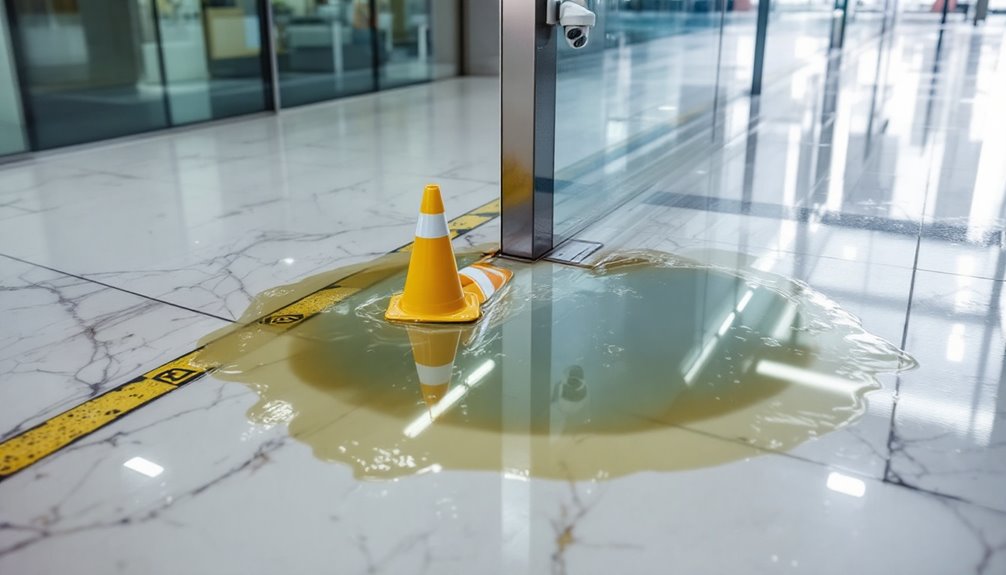
Determining liability in slip and fall cases often hinges on the timing of hazardous conditions. The legal standards for negligence involve three key elements: duty of care, breach of duty, and causation. Property owners hold a duty of care to keep their premises safe. This includes regular maintenance and addressing potential hazards. A breach of duty occurs when they fail in these responsibilities, such as neglecting to fix uneven surfaces. Establishing causation involves proving that the breach directly caused the injury. This requires evidence like witness statements or camera footage. The breach must be the proximate cause, meaning the injury was a foreseeable result. Properly documenting the incident and the resulting injuries is essential for a successful claim.
Comparative Fault in Slip and Fall Lawsuits
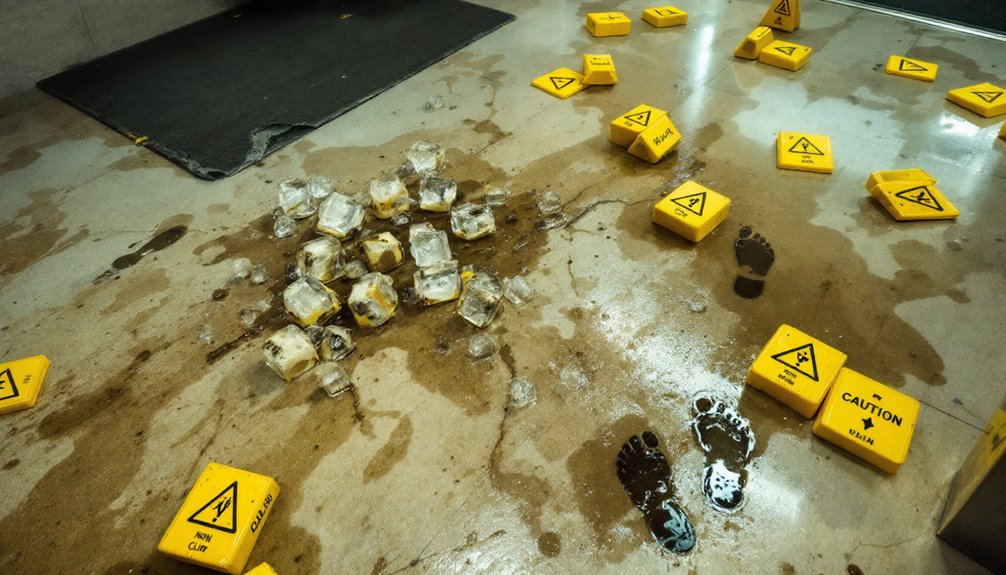
In slip and fall lawsuits, determining fault percentages is essential as it influences the compensation a victim can receive. The victim's award is reduced by their share of fault, which varies by jurisdiction. Different states have different laws, affecting how fault and compensation are calculated.
Determining Fault Percentages
Evaluating fault percentages in slip and fall lawsuits involves understanding comparative negligence. The court assesses the negligence of both the property owner and the plaintiff. Evidence collection is key. Photos, witness statements, and injury records help determine liability. Comparative negligence means the fault is divided between parties. The property owner's actions are scrutinized first. Were warning signs present? Were safety measures like railings used? The plaintiff's actions also matter. Did they ignore warnings or get distracted?
- Evidence matters: Photos and records help prove negligence.
- Dividing fault: Fault is shared between the plaintiff and property owner.
- Action evaluation: Both parties' actions are examined for fault.
These factors guide how fault percentages are determined in slip and fall cases.
Impact on Compensation
Compensation in slip and fall lawsuits often hinges on comparative fault. Comparative negligence affects how much a plaintiff receives. If a plaintiff shares any blame for the accident, their compensation sees a reduction. For example, a 30% fault leads to a 30% reduction in compensation. This guarantees fair distribution of responsibility. Plaintiffs must prove the property owner's breach of duty. They need evidence to show negligence caused the accident. Conversely, property owners may argue the plaintiff ignored warnings or was careless. Solid evidence can reduce the plaintiff's share of fault. This impacts compensation. Determining fault is complex. Each side assesses their case's strength differently. An experienced attorney can navigate these complexities, aiming for the most favorable outcome.
Jurisdictional Differences
How do different states handle comparative fault in slip and fall cases? States approach comparative negligence differently, affecting case outcomes. In Colorado, if a victim is less than 50% at fault, they can recover damages. Here, negligence and liability are assessed by percentage. Illinois requires the injured party to prove the property owner's negligence. Comparative negligence then reduces recovery based on the victim's fault percentage. In Nevada, compensation is adjusted based on each party's role in the incident. California considers both parties' actions, adjusting compensation accordingly.
- Colorado: Victims recover if less than 50% at fault.
- Illinois: Plaintiff must prove owner's negligence; recovery adjusted by fault.
- California: Compensation adjusted based on both parties' negligence.
State-Specific Negligence Laws and Their Implications
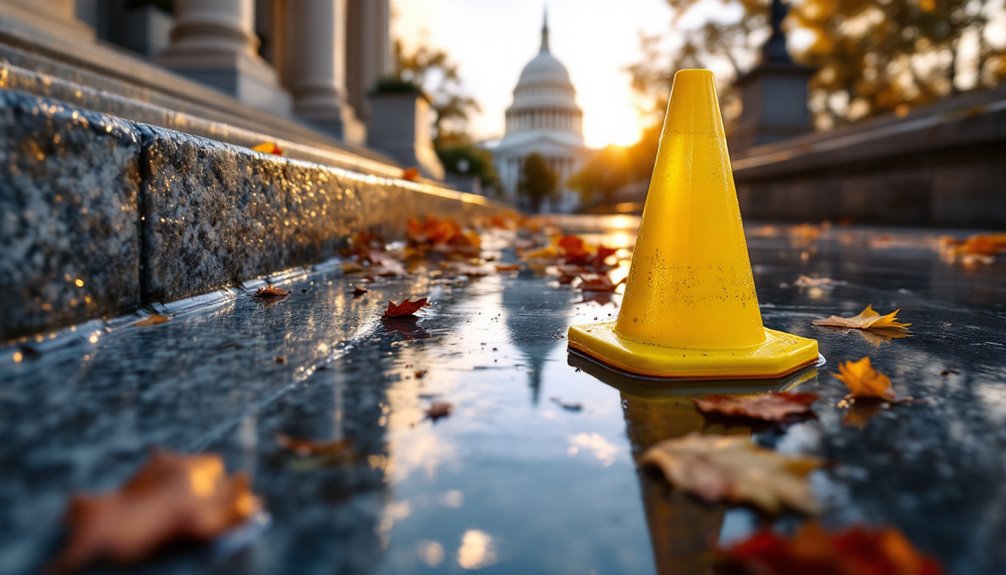
Understanding state-specific negligence laws is essential for handling slip and fall lawsuits. Each state has unique rules that define negligence. For example, states like New York, Florida, and Virginia require proof that property owners had actual or constructive knowledge of a hazard. In contrast, California uses a general negligence standard. These state-specific negligence laws influence legal strategies and outcomes.
Comparative negligence is another important factor. In states like California, victims can still receive compensation even if they share some fault. The total amount is reduced based on their fault percentage. This differs from contributory negligence, where any fault bars recovery. Knowing these variations is vital for anyone involved in slip and fall claims, as it affects how cases are approached and damages are calculated.
Common Defenses in Slip and Fall Claims
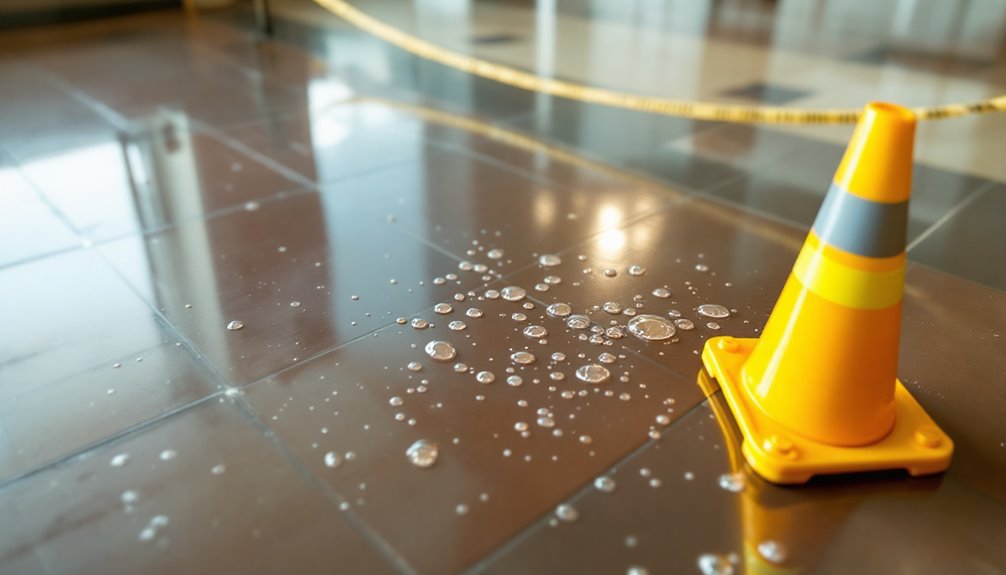
In slip and fall claims, several defenses are commonly used by defendants. One is the open and obvious doctrine, arguing that the hazard was clearly visible. This suggests no negligence since a reasonable person should have avoided it. Another common defense is contributory negligence. Here, the defense claims the plaintiff contributed to their own injury. This can reduce or even eliminate compensation. Lack of notice is also a frequent defense. The property owner argues they were unaware of the hazard, so they cannot be held liable. These defenses aim to show that the defendant acted reasonably and did not breach their duty of care.
- Open and Obvious Doctrine: Hazard was visible.
- Contributory Negligence: Plaintiff partly at fault.
- Lack of Notice: Owner unaware of hazard.
Proving Negligence in Slip and Fall Cases
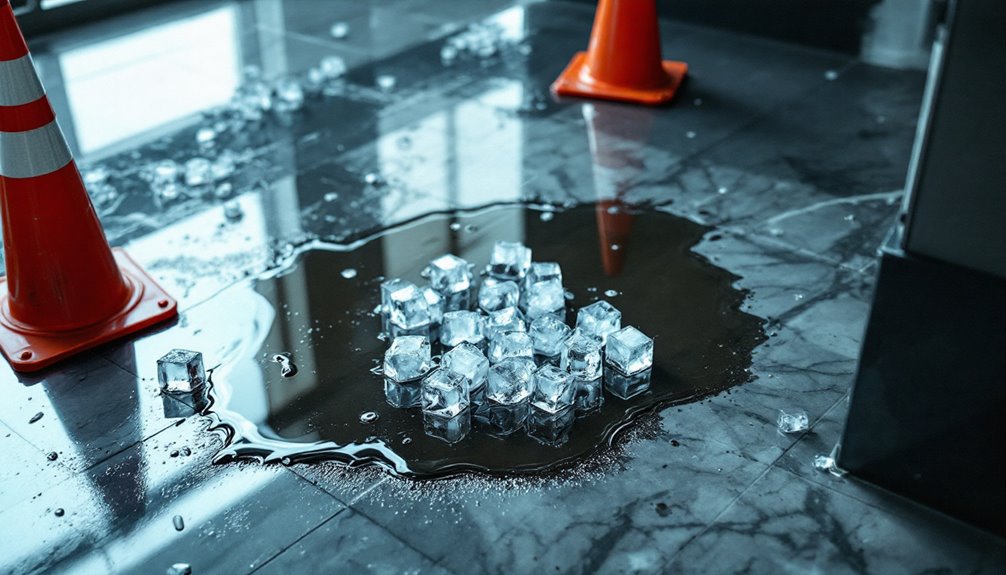
While defendants in slip and fall claims often rely on various defenses, proving negligence remains a key task for the plaintiff. To succeed, the plaintiff must demonstrate the defendant owed a duty of care and breached that duty. This breach must directly cause the plaintiff's fall and result in damages. Evidence is essential in proving negligence. Photos or videos of the scene, witness statements, and surveillance footage can support the claim. Records of maintenance and cleaning logs may show a breach of duty. Additionally, factors such as how long a hazard was present, its visibility, and the presence of warning signs affect liability. Common examples include wet floors, uncleared ice, or broken handrails, all indicating a breach of duty.
The Role of Attorneys in Navigating Slip and Fall Lawsuits
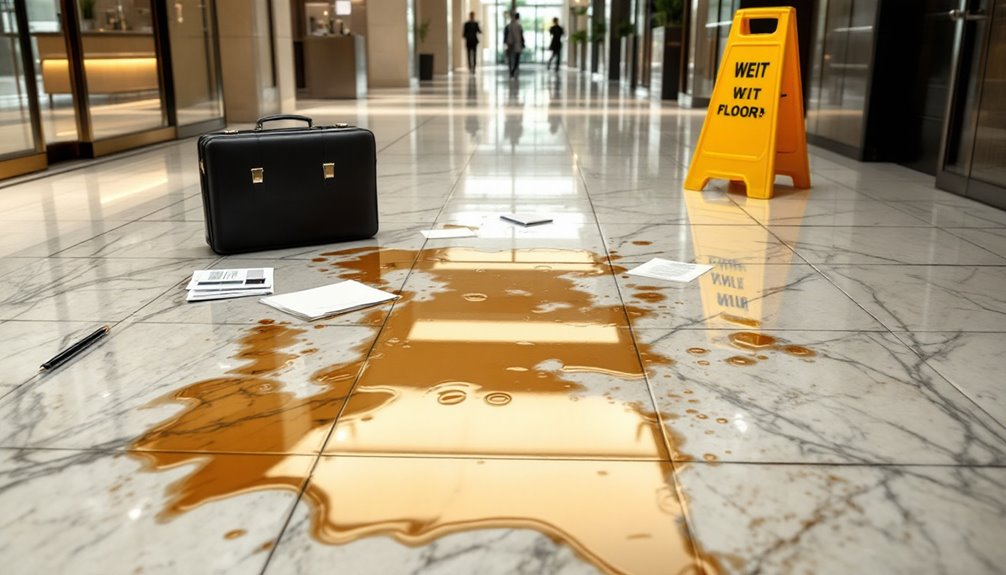
Attorneys play a crucial role in slip and fall lawsuits. They help clients navigate complex legal processes and protect their legal rights. Attorneys investigate cases by gathering evidence like photographs and witness statements. They consult with experts to strengthen tort claims and identify negligence. They determine liable parties, including property owners or contractors, guaranteeing all are held accountable. Attorneys also prepare and file necessary legal documents, ensuring that all deadlines are met and that the case is presented clearly and effectively in court. In addition to slip and fall cases, they may handle various other personal injury claims, including selfdefense claims in the bay area, where they advocate for clients who have been wrongfully accused or need to assert their rights. By providing comprehensive legal guidance and representation, attorneys strive to achieve the best possible outcomes for their clients, helping them secure just compensation for their injuries and losses.
Attorneys also advocate for fair compensation. They negotiate with insurance companies to cover damages and expenses. If needed, they represent clients in court to maximize settlements. Their skills are essential for countering tactics used to minimize claims.
- Investigate thoroughly: Collect evidence and consult experts.
- Identify all liable parties: Guarantee thorough accountability.
- Negotiate fair compensation: Protect clients' financial interests.
Frequently Asked Questions
What Is the Average Settlement for Slip and Fall Cases?
The average settlement for slip and fall cases varies. Minor injuries often settle between $10,000 and $15,000. Moderate injuries might settle for $20,000 to $35,000. Severe injuries can exceed $50,000. Factors affecting the settlement include the extent of injuries, medical expenses, and evidence of negligence. Insurance coverage and liability also play roles. Each case is unique, and settlements depend on specific circumstances and available evidence. In some instances, when multiple factors align, such as clear negligence and substantial medical documentation, victims may receive the biggest personal injury settlements, reaching into the six-figure range or more. Additionally, settlements can be impacted by the victim’s lost wages, emotional suffering, and future medical needs, further increasing their value. It is essential for individuals involved in slip and fall cases to consult with legal professionals to navigate the complexities of their claims effectively.
How Long Do Slip and Fall Lawsuits Typically Take to Resolve?
Slip and fall lawsuits vary in duration. Simple cases might settle in a few months. More complex cases can take years. Factors affecting timelines include the length of medical treatment, the time to gather evidence, and negotiation with insurance companies. Court schedules and backlogs also play a role. A straightforward case might resolve quickly, while disputed liability or severe injuries can extend the process substantially, sometimes involving lengthy trials and appeals.
Can Weather Conditions Impact Slip and Fall Claims?
Weather conditions can indeed impact slip and fall claims. Like a domino effect, rain, snow, or ice create slippery surfaces, leading to accidents. Property owners must adapt to these changes, clearing hazards and posting warnings. Failure to do so may be seen as negligence. To establish liability, evidence such as photos and weather reports is key. Documenting conditions promptly guarantees a stronger claim. Each case hinges on its specific circumstances and weather impact.
Are Slip and Fall Cases Often Settled Out of Court?
Slip and fall cases are often settled out of court. This is because settling can save time and money. It avoids the uncertainty of a trial. Both parties usually prefer a quick resolution. Settlements are influenced by factors like injury severity, proof of negligence, and insurance coverage. Lawyers play a key role in negotiations. They help clients understand their rights and potential outcomes. This makes settlements a common choice.
How Does Insurance Coverage Affect Slip and Fall Lawsuits?
Insurance coverage plays a vital role in slip and fall lawsuits. Coverage limits dictate the maximum payout possible. If a claim exceeds these limits, the plaintiff might need to sue the property owner directly. Insurance companies often try to minimize payouts and might argue comparative negligence. They also assess the property condition and preventive measures taken. Cooperation from the insurance company can influence settlement timelines and outcomes in these cases.
Conclusion
In slip and fall lawsuits, understanding negligence is key to unraveling these complex cases. As the saying goes, "The devil is in the details." This holds true when proving duty of care, breach, causation, and damages. Gathering strong evidence and understanding state laws are essential steps. Defenses can be anticipated with skilled legal guidance. With the right knowledge and approach, individuals can navigate these legal waters more effectively, ensuring justice and fair compensation.
